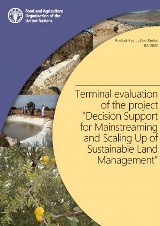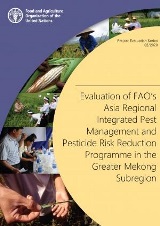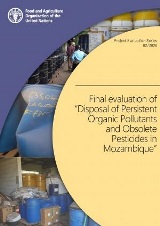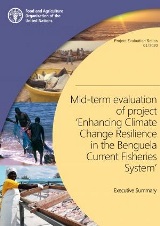Completed evaluations

Final evaluation of ''Demonstration project for the decontamination of Persistent Organic Pesticides contaminated soils using non-thermal treatment methods''
28/02/2020
Since the 1980s, pesticides have been used in Botswana for agricultural production and to help control outbreaks of pests. Large quantities of unused pesticides remained in depots where they leaked from their containers and contaminated the soil, posing a threat to both human and environmental health. This project was set up to deal with contaminated soils and to strengthen pesticide lifecycle management to reduce accumulation of obsolete pesticides and the risk from pesticides in general.

Terminal evaluation of the project “Decision support for mainstreaming and scaling up of sustainable land management”
28/02/2020
Land degradation reduces food productivity and security, disrupts vital ecosystem functions and increases carbon emissions and vulnerability to climate change. 52 percent of the land used for agriculture worldwide is estimated to already be affected. Studies indicate that land degradation directly affects 1.5 billion people around the world.

Evaluation of FAO’s Asia Regional Integrated Pest Management and Pesticide Risk Reduction Programme in the Greater Mekong Subregion
25/02/2020
This evaluation assessed the role and contributions of FAO against the programme outcome-level results: (i) strengthened regulatory framework for the control and registration of pesticides; and (ii) adoption and economic benefits of the community-level Farmer Field School (FFS) activities in all partner countries within Phase II (from 2013 to 2018.

Final evaluation of “Disposal of persistent organic pollutants and obsolete pesticides in Mozambique”
25/02/2020
Pesticides have helped control disease and increase crop production for food security. However poor management of pesticides has shown negative impacts human health and the environment. FAO, supported by GEF, implemented a Persistent Organic Pollutants (POPs) project in Mozambique to safeguard and dispose existing stocks of obsolete pesticides, as well as working to reduce risk across the pesticide lifecycle at the policy level.

Mid-term evaluation of “Securing Biodiversity Conservation and Sustainable Use in Huangshan Municipality”
24/02/2020
The project's specific objective is to “evaluate, adapt, and implement relevant best practices derived from the successful management of Huangshan National Scenic Reserve to strengthen and upgrade the existing municipal system of protected areas (PAs).”

Report by the FAO Office of Evaluation (OED) of the regional synthesis of lessons learned from, and trends identified in the country programme evaluations: in Asia and the Pacific 2014-2019
20/02/2020
This synthesis presents results of FAO Office of Evaluation (OED) evaluations completed between 2014 and 2019 for the Asia and the Pacific region, analysing FAO’s contribution, issues and lessons learned to inform decisions on future priorities and actions in the region.

Evaluation of FAO's contribution to Burundi 2012-2018
07/02/2020
Nearly 65 percent of Burundi’s population lives below the poverty line, ranking it 184th on the World Bank’s 188-country Human Development Index in 2016. After a prolonged civil war, Burundi is suffering from high levels of food and nutrition insecurity and a fragile social context. Renewed unrest since the controversial presidential election...

Terminal Evaluation of ''Prevention and Disposal of Persistent Organic Pollutants and Obsolete Pesticides in Eritrea'' Phase II
07/02/2020
Pesticides have helped control disease and increase crop production for food security. However poor management of pesticides has shown negative impacts human health and the environment, including death and disability among users. Of particular concern are Persistent Organic Pollutants (POPs) that are highly effective in the control of the insect vectors of malaria and sleeping sickness and locusts.

Final evaluation of "Enhancing Agriculture Production through Irrigation System Improvement and Strengthening Institutional Capacity"
06/02/2020
Rice and potatoes are Afghanistan’s two most staple crops after wheat. Rice production is dependent on water from irrigation canals, with most of Afghanistan’s irrigation infrastructure in disrepair, farmers are vulnerable. Between 2016 and 2018, FAO in Afghanistan (FAOAF) and the Ministry of Agriculture, Irrigation and Livestock (MAIL) rehabilitated irrigation infrastructure and laid the foundations of a virus-free potato seed industry in three provinces (Kunduz, Baghlan and Takhar).

Mid-term evaluation of project ‘Enhancing Climate Change Resilience in the Benguela Current Fisheries System’
31/01/2020
The project “Enhancing Climate Change Resilience in the Benguela Current Fisheries System”, seeks to build resilience and reduce the vulnerability to climate change of the marine fisheries and mariculture sectors within the Benguela Current Large Marine Ecosystem (BCLME), through introduction of adaptation strategies in order to ensure food and livelihood security in Angola, Namibia and South Africa.
